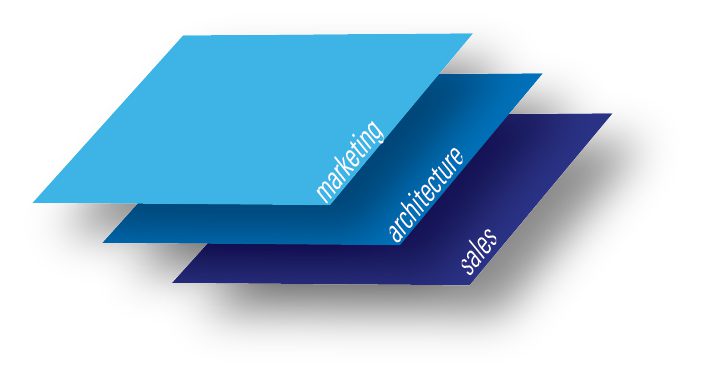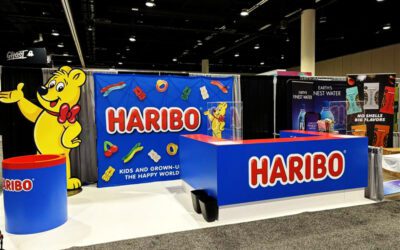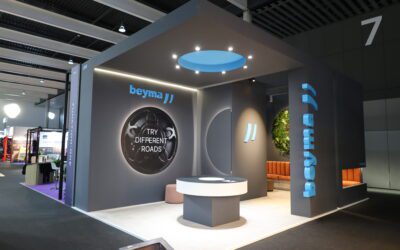Working on the design and fabrication of trade shows gives our team a unique perspective, but one that is also very limited. We see things in big ideas; in great general concepts with elements that help reduce costs associated with exhibits. The problem is that those elements are really only a small part of what makes an exhibit truly successful. Throughout the beginning of 2014, our sales and creative departments took to the road to observe more. What we noticed that the best exhibits layer 3 elements: architecture, marketing and sales to create spaces that spark energy, enthusiasm and RESULTS.
Marketing
Often times marketing within an exhibit is expressed as a way for corporate branding, images and messages to be displayed in clean and unique methods. While that is still the overriding goal, exhibits have turned into canvases for marketing ideas, not only about your brand, but the pervasive challenges for an overall industry. Marketing has changed, and in turn so have how the most successful exhibits market themselves. Layering big ideas like saving oceans through your products, expressing love for an industry and creating an engaging idea have created exhibits that are unique on show floor of brands promoting themselves. By using some of these bigger concepts, people are more intrigued to learn about the idea, which in turn leads to longer stay times, greater retention and better results.
Architecture
Architecture might seem like a big word to be throwing around the creation of exhibit spaces, but the reality is that the more you think of your exhibit, the more architecture influences guide the experience. Different forms of architectural floor plans create different experiences (see types of floor plans from exhibitor magazine). The challenge is to figure out what type of experience you want to convey. Exhibit architecture is important in shaping the marketing idea and delivering it in the most effective way. Booths as a whole however have been trending toward being a controlled environment, meaning arranging distinct front and back areas of the exhibit in order to control the marketing message through layering. By establishing a layered profile, you can control the message given to your target market within the space.
Sales
Sales relates completely to the energy of your exhibit staff. More than anything, this energy makes or breaks a trade show. A staff that is outgoing, educated on the message and inclusive helps drive attendees into an exhibit. A staff that is passive and waits for prospects to come to them, allows opportunities to pass by. That is as simple as it is. Attendees come to the show to learn more about your products. If you are not driving them into your exhibit, you are losing opportunities.
Now every exhibit manager knows that getting a sales team motivated and out to the aisle to grab attendees is an uphill battle, but along the same lines of architectural layering, sales layering may be a tool that can be used for great success.
Layering sales typically involves 2 groups of sales
– Attractors – These are the sales people that are out at the edges of the exhibit (and sometimes in the aisles) that are briefed on the big marketing idea. They are the ones that aren’t afraid to approach every attendee, and invite them to experience a portion of the exhibit. Once the attractor can determine the qualification of the lead, they are either passed onto an Executive, or invited to experience the rest of the exhibit. The attractor is a hard position to fill, but utilizing new sales people works well here or hiring outside attractors is a great way to drive that energy.
– Executives – Executives are your main sales people. These are the company experts that actually will be able to speak in depth about the products, and how they specifically relate to the ideas presented. These are also the people who should be situated within the second layer of the exhibit where more private conversations and meetings should be held.
The layering effect of sales allows energy to contagious throughout the exhibit, and allows your team to do what they do best. It gives your main sales team the new opportunities they might mine, and exposes your brand and ideas to more of the show than would typically, both big wins in terms of overall sales and brand awareness.
Layering in exhibits is what helps drive results. The best exhibits use combinations of all these layers, but adding more to one of the layers will drive more results to expand your program. To learn more about any of the three layers and our observations, please contact us.



